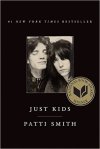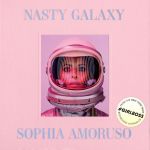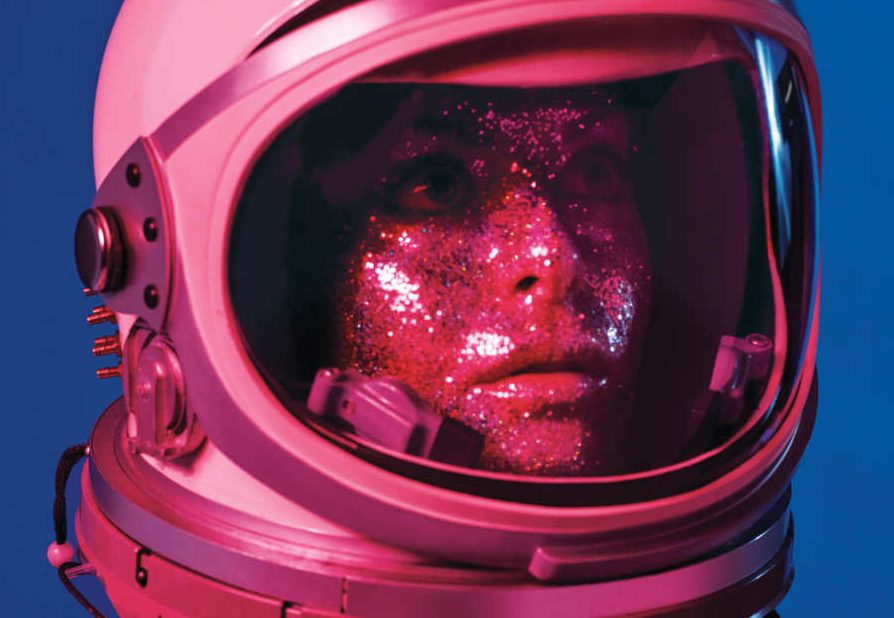Are there born-feminists? Perhaps only Emma Watson, who, much like her Harry Potter alter ego Hermione, seems to be too intelligent for her own good — since birth. I’ve paid very little attention to the term growing up. I was nine when Riot Grrrl published its manifesto and had other things on my mind such as making a science project that rocked and being exempted in P.E. But I was always drawn to what we now call “strong female characters,” a subjective category that has evolved in meaning as I grew older. There was always one in the books I enjoyed reading. At times the lesson was as much in some’s weaknesses as it is in other’s strengths. In reading about their stories, I got to decide how I wanted to define strength and where I saw it. Isn’t that what feminism is about? Here are the 8 books to fuel your feminist fire:
 The Sixteen Pleasures, Robert Hellenga. Found in Booksale in 2000, in the eve of my adulthood. Unlike what the title suggests, it’s not a mindless erotic romp. Unlike what the cover design suggests, it’s not a boring lecture on art history. It’s about a 29-year-old book conservator in 1966, who heads off to Florence to protect important books from a great flood. She chances upon a book — The Sixteen Pleasures — which the then-Pope had declared forbidden and burned. She absorbs the book and sort of lives it, in a late-bloomer coming-of-age way.
The Sixteen Pleasures, Robert Hellenga. Found in Booksale in 2000, in the eve of my adulthood. Unlike what the title suggests, it’s not a mindless erotic romp. Unlike what the cover design suggests, it’s not a boring lecture on art history. It’s about a 29-year-old book conservator in 1966, who heads off to Florence to protect important books from a great flood. She chances upon a book — The Sixteen Pleasures — which the then-Pope had declared forbidden and burned. She absorbs the book and sort of lives it, in a late-bloomer coming-of-age way. Girl With A Pearl Earring, Tracy Chevalier. Found in Booksale, around the same time. It’s inspired the famous Vermeer painting and is a fictional account of the woman behind it — how she was dismissed, being young and female; how she was desired, being young and female; how she was a passive observer in her own life, until she wasn’t.
Girl With A Pearl Earring, Tracy Chevalier. Found in Booksale, around the same time. It’s inspired the famous Vermeer painting and is a fictional account of the woman behind it — how she was dismissed, being young and female; how she was desired, being young and female; how she was a passive observer in her own life, until she wasn’t. The Female of the Species, Joyce Carol Oates. Read at an airport in another continent, across a smoking lounge full of men. This book is a collection of stories — mysteries and thrillers — about women of all ages and backgrounds and what makes them tick, and maybe turn from innocent bystanders to monsters. It’s pretty dark, as expected of Oates, and so vivid you would remember the pictures it painted in your mind long after you’ve forgotten what they were about. It’s a tale of women pushed to their limits, implicitly demonstrating how we are, actually, the stronger sex.
The Female of the Species, Joyce Carol Oates. Read at an airport in another continent, across a smoking lounge full of men. This book is a collection of stories — mysteries and thrillers — about women of all ages and backgrounds and what makes them tick, and maybe turn from innocent bystanders to monsters. It’s pretty dark, as expected of Oates, and so vivid you would remember the pictures it painted in your mind long after you’ve forgotten what they were about. It’s a tale of women pushed to their limits, implicitly demonstrating how we are, actually, the stronger sex. Poser: My Life in Twenty-three Yoga Poses, Clarie Dederer. Stumbled upon when I was sad and turned to yoga for clarity and calm. It’s a book about yoga, and then it’s not. It’s an autobiography of a mom who had put her life on hold to take care of her kid and her husband, and started to lose herself in the process. It spans a decade and over that decade, she tackles, along with the obstacles in her life, the yoga poses she’s most afraid of. Every chapter holds a different pose, and a different real-life problem for a woman trying to find a balance between the things she loves and the things she hates about them.
Poser: My Life in Twenty-three Yoga Poses, Clarie Dederer. Stumbled upon when I was sad and turned to yoga for clarity and calm. It’s a book about yoga, and then it’s not. It’s an autobiography of a mom who had put her life on hold to take care of her kid and her husband, and started to lose herself in the process. It spans a decade and over that decade, she tackles, along with the obstacles in her life, the yoga poses she’s most afraid of. Every chapter holds a different pose, and a different real-life problem for a woman trying to find a balance between the things she loves and the things she hates about them. The Bell Jar, Sylvia Plath. Should’ve read this sooner, I think. I’ve avoided it because it was like, a modern classic. There were comparisons to The Catcher in the Rye, and I couldn’t stand The Catcher in the Rye. More than anything, it has taught me to never judge a book by its popularity. The Bell Jar is about a woman who is going mad — in this day and age, that’s something every woman could relate to in varying degrees. We get inside our heads and sometimes we get lost. Others never return. Plath is a master at making suffering seem both beautiful and real.
The Bell Jar, Sylvia Plath. Should’ve read this sooner, I think. I’ve avoided it because it was like, a modern classic. There were comparisons to The Catcher in the Rye, and I couldn’t stand The Catcher in the Rye. More than anything, it has taught me to never judge a book by its popularity. The Bell Jar is about a woman who is going mad — in this day and age, that’s something every woman could relate to in varying degrees. We get inside our heads and sometimes we get lost. Others never return. Plath is a master at making suffering seem both beautiful and real. The Bloody Chamber, Angela Carter. Read on a plane. Beside a nun. There was turbulence. It’s a book of gothic, gory fairytales. How I described one story to a friend: “A vampire’s virgin captive had Stockholm Syndrome.” Angela Carter, feminist icon and writer of dreamy, dreamy prose, captures beautifully how women can sometimes be beholden to their fears, even justifying them. It’s a strange take on stories we think we already know — our stories included.
The Bloody Chamber, Angela Carter. Read on a plane. Beside a nun. There was turbulence. It’s a book of gothic, gory fairytales. How I described one story to a friend: “A vampire’s virgin captive had Stockholm Syndrome.” Angela Carter, feminist icon and writer of dreamy, dreamy prose, captures beautifully how women can sometimes be beholden to their fears, even justifying them. It’s a strange take on stories we think we already know — our stories included. Just Kids, Patti Smith. Read a dozen times, pristine condition. Patti says she looks like a boy. She doesn’t make an effort to look pretty — she wants to look like art. In this autobiography, she tells more than just recounts her love story with Robert Mapplethorpe, she tells her story. How she wanted to be different. How she struggled because she was different. How she was a partner and an individual all in one. Patti Smith is not the most relatable person, but in Just Kids, you just might find yourself in her story. Actually, it’s guaranteed.
Just Kids, Patti Smith. Read a dozen times, pristine condition. Patti says she looks like a boy. She doesn’t make an effort to look pretty — she wants to look like art. In this autobiography, she tells more than just recounts her love story with Robert Mapplethorpe, she tells her story. How she wanted to be different. How she struggled because she was different. How she was a partner and an individual all in one. Patti Smith is not the most relatable person, but in Just Kids, you just might find yourself in her story. Actually, it’s guaranteed. Nasty Galaxy, Sophia Amoruso. It’s not really a book. It’s like a collection of women who’ve inspired Nasty Gal founder and Girl Boss author Sophia Amoruso through the years. Some might inspire you, too. The women of The Wing, for instance. Read it or just look at the photos. Either way, you’ll emerge feeling like you can take on the world.
Nasty Galaxy, Sophia Amoruso. It’s not really a book. It’s like a collection of women who’ve inspired Nasty Gal founder and Girl Boss author Sophia Amoruso through the years. Some might inspire you, too. The women of The Wing, for instance. Read it or just look at the photos. Either way, you’ll emerge feeling like you can take on the world.

0 comments on “8 books to fuel your feminist fire”